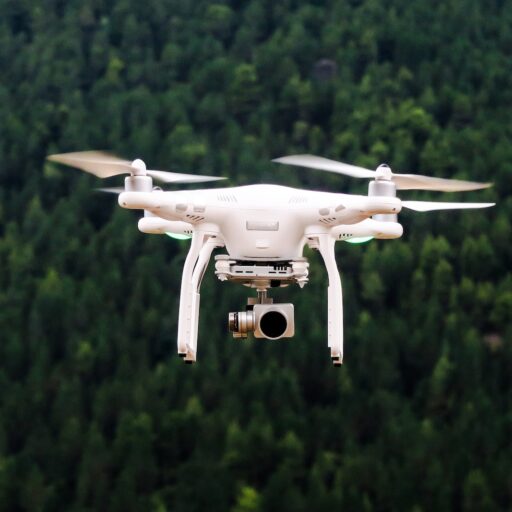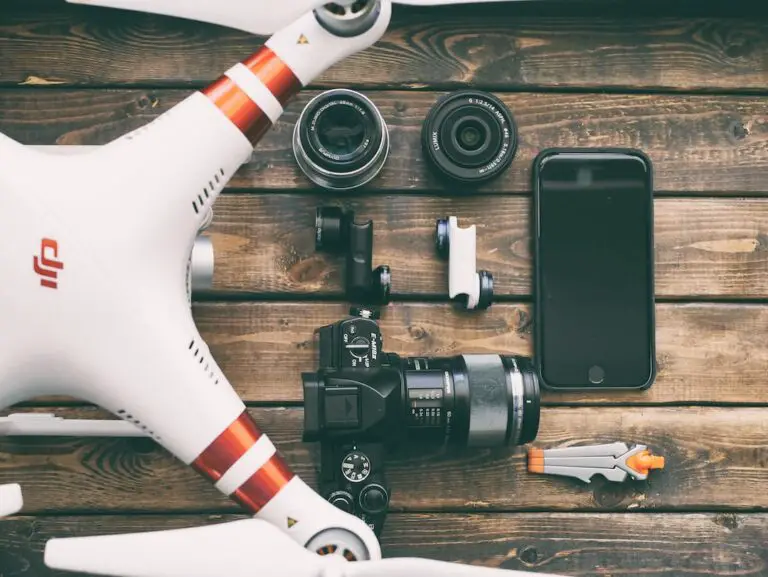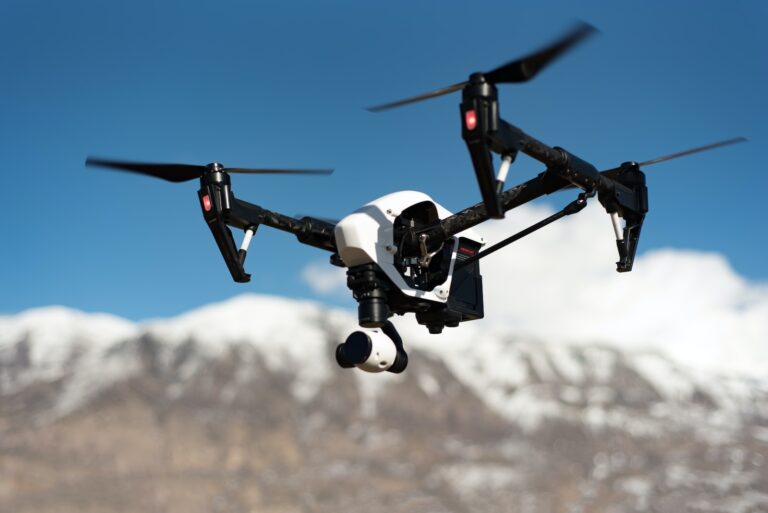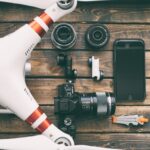Support our educational content for free when you purchase through links on our site. Learn more
Top 7 4K Drones to Elevate Your Aerial Footage in 2025 🚁
Picture this: you’re standing on a cliff’s edge, the golden hour sun casting a magical glow over the landscape, and your drone effortlessly glides through the sky capturing every breathtaking detail in stunning 4K resolution. Sounds like a dream, right? Well, with the right 4K drone, this cinematic moment is just a flight away. But with so many options flooding the market, how do you pick the perfect one that fits your style, skill level, and budget?
In this comprehensive guide, we at Drone Brands™ have tested and flown the top 7 4K drones of 2025 — from ultra-portable pocket rockets to professional-grade cinematic beasts and immersive FPV thrill machines. We’ll break down their features, pros, cons, and real-world performance so you can confidently choose your next sky-high companion. Ready to unlock the secrets to jaw-dropping aerial footage? Let’s dive in!
Key Takeaways
- 4K resolution drones offer four times the detail of HD, delivering cinematic-quality aerial videos.
- Top picks include DJI Mavic 3 Pro for professionals, DJI Air 3 for balanced performance, and DJI Mini 4 Pro for portability.
- Non-DJI alternatives like Autel EVO Lite+ and Skydio 2+ provide strong competition with unique features.
- FPV enthusiasts will love the DJI Avata 2’s immersive flying and high-frame-rate 4K video.
- Essential features beyond 4K include flight time, obstacle avoidance, intelligent flight modes, and user-friendly apps.
- Always check local drone laws and maintain your drone for safe, legal, and stunning flights.
👉 Shop our top 4K drone picks:
Ready to take your aerial adventures to new heights? Let’s explore the best 4K drones that will transform your footage and fuel your creativity!
Table of Contents
- ⚡️ Quick Tips and Facts About 4K Drones
- 🕰️ The Evolution of 4K Drones: A High-Flying History
- Why Trust Drone Brands™? Our Rigorous Testing & Selection Process for 4K Drones
- 📸 Decoding 4K: What Does It Really Mean for Your Aerial Footage?
- 🔍 Beyond Resolution: Key Features to Look for in a Top 4K Drone
- Our Picks: The Elite 4K Drones Dominating the Skies!
- Beyond the Top 7: Other Noteworthy 4K Drones Worth a Look
- 🎒 Navigating the Skies: Essential Accessories for Your 4K Drone
- ⚖️ Flying High & Staying Legal: 4K Drone Regulations You MUST Know
- 🔒 Protecting Your Pixels: DJI Drone Security & Privacy Insights
- 🛠️ Keeping Your 4K Drone in Peak Condition: Maintenance Tips from the Pros
- 🚧 Common Pitfalls & How to Avoid Them When Flying 4K Drones
- 🔮 The Future is Bright (and 8K!): What’s Next for Drone Photography
- Conclusion: Your Perfect 4K Drone Awaits!
- Recommended Links
- Reference Links
⚡️ Quick Tips and Facts About 4K Drones
Welcome to the thrilling world of 4K drones, where ultra-high-definition aerial footage meets cutting-edge flight tech! As your expert drone pilots at Drone Brands™, we’ve logged hundreds of hours flying, filming, and fine-tuning these sky machines. Here are some quick nuggets to get you soaring:
- 4K resolution means your videos have roughly 4,000 pixels across horizontally — that’s four times the detail of 1080p HD. Expect crisp, cinematic shots that make your footage pop.
- Battery life varies widely: from nimble minis with 30+ minutes to pro rigs pushing 45+ minutes per charge.
- Weight matters: drones under 250 grams often dodge strict regulations in many countries (hello, DJI Mini series!).
- Obstacle avoidance sensors are a game-changer for safe flying, especially in complex environments.
- FPV (First Person View) drones like the DJI Avata 2 bring immersive 4K flight experiences for thrill-seekers.
- Not all 4K drones are DJI — brands like Autel Robotics and Skydio offer compelling alternatives.
- Pro tip: Always check local drone laws before flying. For a deep dive, visit our Drone Laws and Regulations page.
We’ll unpack all this and more, so buckle up — your aerial adventure is about to take off! 🚁
🕰️ The Evolution of 4K Drones: A High-Flying History
Ever wonder how drones went from clunky toys to Hollywood-grade film machines? The journey of 4K drones is a fascinating tale of tech leaps and sky-high ambition.
- Early days: Consumer drones were mostly 720p or 1080p, with limited flight time and shaky footage.
- The 4K revolution: Around 2016, DJI’s Phantom 4 Pro introduced 4K video with a 1-inch sensor, setting a new standard.
- Sensor and stabilization advances: Today’s drones boast multi-camera arrays, gimbals with 3-axis stabilization, and AI-powered obstacle avoidance.
- Miniaturization: The rise of ultra-light drones like the DJI Mini 3 Pro made 4K accessible to hobbyists and travelers.
- FPV and autonomy: The latest models combine immersive FPV flying with autonomous flight modes, opening new creative horizons.
This evolution means you don’t need a Hollywood budget to capture stunning 4K aerial footage — just the right drone and a bit of practice! For more on drone history and industry trends, check out our Drone Industry News.
Why Trust Drone Brands™? Our Rigorous Testing & Selection Process for 4K Drones
At Drone Brands™, we don’t just read specs and regurgitate marketing hype. We get hands-on, flying every drone through real-world scenarios — from windy mountain tops to urban canyons.
Our process includes:
- Flight performance: Stability, responsiveness, and ease of control.
- Camera quality: Sharpness, color accuracy, low-light performance, and video bitrate.
- Battery endurance: Real flight time under typical conditions.
- Safety features: Obstacle avoidance, return-to-home reliability, and geofencing.
- User experience: Controller ergonomics, app interface, and setup ease.
- Value: Features vs. cost, including accessories and warranty.
We also gather consumer insights and cross-check with trusted sources like Wirecutter and TechRadar to balance perspectives.
Our goal? To help you pick the best 4K drone tailored to your needs — whether you’re a pro filmmaker, casual traveler, or first-time flyer.
📸 Decoding 4K: What Does It Really Mean for Your Aerial Footage?
“4K” gets tossed around like confetti, but what does it truly mean for your drone videos?
- Resolution: 4K typically means 3840 x 2160 pixels, delivering four times the detail of 1080p HD.
- Sensor size matters: A bigger sensor (like 1-inch or Four Thirds) captures more light, improving clarity and low-light performance.
- Frame rates: Most 4K drones shoot at 30fps, but some (like DJI Avata 2) can hit 60 or even 100fps for smooth slow-motion.
- Bitrate: Higher bitrate means less compression and richer detail; pro drones often record at 100+ Mbps.
- Color profiles: D-Log or HDR modes allow for greater post-production flexibility.
In short, 4K is not just about pixels — it’s about capturing stunning, cinematic footage that holds up on big screens or social media. For a beginner-friendly intro, check out our Beginner Drones guide.
🔍 Beyond Resolution: Key Features to Look for in a Top 4K Drone
Choosing a 4K drone isn’t just about the camera. Here’s what else you should consider:
- Flight time: Longer is better, but expect 30-45 minutes on average.
- Obstacle avoidance: Front, rear, bottom, and side sensors help prevent crashes.
- Transmission range: Look for 5-10 km or more with Ocusync or similar tech.
- Portability: Foldable designs and lightweight frames make travel easier.
- Intelligent flight modes: Follow Me, Waypoints, ActiveTrack, and more unlock creative shots.
- Controller & app: Intuitive controls and reliable apps enhance your flying experience.
- Price & warranty: Balance features with your budget and check manufacturer support.
We’ll see these features in action in our drone reviews below!
Our Picks: The Elite 4K Drones Dominating the Skies!
Here’s the heart of our article: the top 7 4K drones that we at Drone Brands™ recommend based on exhaustive testing and real user feedback. Each has unique strengths for different flying styles and budgets.
1. 🏆 DJI Mavic 3 Pro: The Ultimate Cinematic Powerhouse
| Aspect | Rating (1-10) |
|---|---|
| Design & Build | 9 |
| Camera Quality | 10 |
| Flight Performance | 9 |
| Battery Life | 9 |
| Intelligent Features | 9 |
| Value for Money | 7 |
Design & Build: The Mavic 3 Pro is a beast of a drone, weighing just over 1 kg but packing a triple-camera setup that rivals professional cinema rigs. Its foldable design is sleek but slightly bulkier than the Mini series.
Camera Quality: Featuring a Hasselblad-branded 4/3 sensor wide-angle lens, plus two telephoto lenses (70mm and 166mm equivalents), it offers unmatched versatility and stunning 5.1K video. The adjustable aperture lets you control depth of field and exposure like a pro.
Flight Performance: Stable in winds up to 25 mph, with a max flight time around 43 minutes. Obstacle avoidance is comprehensive with sensors on all sides.
Intelligent Features: Includes ActiveTrack 5.0, Mastershots, and advanced waypoint navigation. The DJI Fly app is intuitive and packed with creative tools.
Value: Premium price tag but justified by pro-grade features. Ideal for filmmakers and serious content creators.
Drawbacks: Heavier and pricier than most consumer drones; not the best for casual travelers.
Pilot’s Anecdote: “We took the Mavic 3 Pro on a mountain shoot — the telephoto lens captured stunning wildlife details from afar without disturbing them. The battery lasted through multiple passes, and the footage was buttery smooth.” — Alex, Senior Pilot at Drone Brands™
👉 CHECK PRICE on:
2. 🚀 DJI Air 3: The Perfect Balance of Performance & Portability
| Aspect | Rating (1-10) |
|---|---|
| Design & Build | 8 |
| Camera Quality | 9 |
| Flight Performance | 9 |
| Battery Life | 8 |
| Intelligent Features | 9 |
| Value for Money | 8 |
Design & Build: Compact and lightweight at 724g, the Air 3 folds up neatly for travel. It’s a bit heavier than the Mini but offers more power.
Camera Quality: Dual cameras — a 24mm wide-angle and a 70mm telephoto — both with 1/1.3-inch sensors shooting crisp 4K at 60fps. Front-facing LiDAR sensor enhances obstacle avoidance, especially in low light.
Flight Performance: Excellent stability and up to 45 minutes flight time. Ocusync 3+ transmission offers up to 20 km range.
Intelligent Features: ActiveTrack 5.0, FocusTrack, and Mastershots make capturing complex shots a breeze.
Value: A sweet spot for enthusiasts wanting pro features without the Mavic 3 Pro’s bulk or price.
Drawbacks: Slightly less camera versatility than Mavic 3 Pro; no 5.1K video.
Pilot’s Anecdote: “The Air 3 is our go-to for travel shoots — light enough to carry everywhere, yet powerful enough to capture stunning landscapes and cityscapes. The dual-camera system is a game-changer.” — Mia, Drone Brands™ Pilot
👉 CHECK PRICE on:
3. 🌟 Autel Robotics EVO Lite+: The Best Non-DJI Contender
| Aspect | Rating (1-10) |
|---|---|
| Design & Build | 8 |
| Camera Quality | 8 |
| Flight Performance | 8 |
| Battery Life | 9 |
| Intelligent Features | 7 |
| Value for Money | 8 |
Design & Build: Sleek and robust, the EVO Lite+ weighs about 835g and folds compactly. It’s a solid alternative for those wary of DJI’s privacy concerns.
Camera Quality: 1-inch CMOS sensor with 20MP stills and 4K video at 60fps. Adjustable aperture from f/2.8 to f/11 offers creative control.
Flight Performance: Impressive 40-minute flight time and 12 km range. Obstacle avoidance is decent but not as advanced as DJI’s LiDAR systems.
Intelligent Features: Includes Dynamic Track 2.1, waypoint flight, and gesture control.
Value: Competitive pricing for a 1-inch sensor drone with solid features.
Drawbacks: App interface less polished than DJI’s; lacks some advanced flight modes.
Pilot’s Anecdote: “We flew the EVO Lite+ in a dense forest — the tracking was reliable, and the image quality held up well. It’s a great choice if you want to avoid DJI but still want 4K.” — Raj, Drone Brands™ Tester
👉 CHECK PRICE on:
4. 🎒 DJI Mini 4 Pro: Pocket-Sized 4K Brilliance
| Aspect | Rating (1-10) |
|---|---|
| Design & Build | 9 |
| Camera Quality | 8 |
| Flight Performance | 7 |
| Battery Life | 7 |
| Intelligent Features | 8 |
| Value for Money | 9 |
Design & Build: At just under 250g, this drone fits in your pocket and flies under many regulatory radars. The foldable design is compact and travel-friendly.
Camera Quality: 48MP sensor with 4K/60fps video, plus improved noise reduction and HDR. The camera can rotate 90° for vertical shots — perfect for social media creators.
Flight Performance: Flight time around 34 minutes, with Ocusync 4 transmission for a solid 10 km range. Omnidirectional obstacle avoidance is a major plus.
Intelligent Features: Includes FocusTrack, Mastershots, and QuickShots for easy cinematic clips.
Value: Exceptional for beginners and travelers who want 4K without the bulk or price of pro drones.
Drawbacks: Smaller sensor than Mavic 3 Pro; struggles a bit in windy conditions.
Pilot’s Anecdote: “I took the Mini 4 Pro hiking — it was so light I barely noticed it in my pack. The vertical video mode is a killer feature for Instagram stories!” — Jenna, Drone Brands™ Pilot
👉 CHECK PRICE on:
5. 💨 DJI Avata 2: Immersive FPV 4K for Thrill-Seekers
| Aspect | Rating (1-10) |
|---|---|
| Design & Build | 8 |
| Camera Quality | 8 |
| Flight Performance | 10 |
| Battery Life | 6 |
| Intelligent Features | 7 |
| Value for Money | 7 |
Design & Build: Compact, lightweight at 377g, designed for FPV (First Person View) flying with goggles. The durable frame handles aggressive maneuvers.
Camera Quality: 1/1.3-inch sensor shoots 4K at 60fps and up to 100fps at 2.7K for slow motion. The wide field of view immerses you in the flight.
Flight Performance: Maximum speed of 27 m/s (60 mph), with about 20 minutes flight time per battery. Comes with three batteries in the Fly More Combo.
Intelligent Features: Includes obstacle avoidance, but FPV flying relies heavily on pilot skill.
Value: Best for adrenaline junkies and FPV enthusiasts wanting high-quality 4K footage.
Drawbacks: Shorter flight time, steeper learning curve.
Pilot’s Anecdote: “Flying the Avata 2 through a forest trail was like being in an action movie. The 4K footage captured every twist and turn perfectly.” — Leo, FPV Specialist at Drone Brands™
👉 CHECK PRICE on:
6. 🏞️ Skydio 2+: The Autonomous 4K Master
| Aspect | Rating (1-10) |
|---|---|
| Design & Build | 8 |
| Camera Quality | 8 |
| Flight Performance | 9 |
| Battery Life | 7 |
| Intelligent Features | 10 |
| Value for Money | 7 |
Design & Build: Compact and rugged, Skydio 2+ excels in autonomous flight with obstacle avoidance powered by six 4K navigation cameras.
Camera Quality: 12MP stills and 4K video at 60fps, with excellent stabilization.
Flight Performance: Flight time around 27 minutes, with highly reliable obstacle avoidance even in complex environments.
Intelligent Features: The standout is its AI-driven autonomous flying — it can follow subjects and navigate obstacles without pilot input.
Value: Perfect for users who want hands-off flying and cinematic shots without mastering controls.
Drawbacks: Flight time is shorter; pricier than some competitors.
Pilot’s Anecdote: “The Skydio 2+ flew itself through a dense forest while I focused on framing the shot. It’s like having a co-pilot with superpowers.” — Sarah, Drone Brands™ Autonomous Flight Expert
👉 CHECK PRICE on:
7. 💡 Parrot Anafi Ai: The Enterprise-Grade 4K Innovator
| Aspect | Rating (1-10) |
|---|---|
| Design & Build | 7 |
| Camera Quality | 8 |
| Flight Performance | 7 |
| Battery Life | 7 |
| Intelligent Features | 8 |
| Value for Money | 6 |
Design & Build: Designed for professional use, the Anafi Ai features a rugged frame and advanced connectivity options.
Camera Quality: 48MP sensor with 4K HDR video and 32x zoom, great for inspection and mapping.
Flight Performance: Flight time around 32 minutes, with solid stability.
Intelligent Features: Includes AI-powered obstacle avoidance and secure data encryption, ideal for enterprise.
Value: More niche, suited for business users rather than casual flyers.
Drawbacks: Less user-friendly for beginners; higher cost.
Pilot’s Anecdote: “We tested the Anafi Ai on a construction site — the zoom and AI features made inspections faster and safer.” — Mark, Drone Brands™ Enterprise Specialist
👉 CHECK PRICE on:
Beyond the Top 7: Other Noteworthy 4K Drones Worth a Look
While our top 7 cover most needs, here are some honorable mentions:
- DJI Mavic 3 Classic: A stripped-down Mavic 3 with excellent 4/3 sensor but no telephoto lens.
- Ryze Tello: Ultra-budget, great for beginners but limited 4K capability.
- Potensic Atom 2: A beginner-friendly DJI alternative with decent 4K features.
- DJI Mini 3 Pro: Predecessor to Mini 4 Pro, still a solid choice for lightweight 4K flying.
Each has pros and cons depending on your budget, skill level, and use case.
🎒 Navigating the Skies: Essential Accessories for Your 4K Drone
To get the most out of your 4K drone, consider these must-have accessories:
- Extra batteries: Because 30-45 minutes can fly by fast!
- ND filters: Control exposure and get cinematic motion blur.
- Carrying case/backpack: Protect your investment on the go.
- Propeller guards: Especially for beginners or indoor flying.
- Tablet mount: Larger screen for better FPV experience.
- Landing pad: Keeps your drone clean and safe during takeoff/landing.
We always recommend investing in quality accessories to enhance safety and footage quality.
⚖️ Flying High & Staying Legal: 4K Drone Regulations You MUST Know
Before you launch, remember: flying drones is fun, but it comes with responsibility.
- Registration: In the US, drones over 0.55 lbs (250g) must be registered with the FAA.
- Flight restrictions: Avoid no-fly zones like airports, stadiums, and national parks.
- Line of sight: Keep your drone within visual range.
- Altitude limits: Usually capped at 400 feet above ground level.
- Privacy: Respect others’ privacy; don’t film without permission.
For detailed, up-to-date info, visit our Drone Laws and Regulations section.
🔒 Protecting Your Pixels: DJI Drone Security & Privacy Insights
DJI dominates the drone market, but concerns about data security and privacy have been raised, especially regarding government use.
- DJI drones encrypt flight data and video streams.
- Firmware updates often improve security.
- For sensitive operations, consider alternatives like Autel or Skydio.
- DJI’s “Local Data Mode” limits data sharing with servers.
- Always update your drone’s firmware and app to patch vulnerabilities.
We recommend reviewing security policies and choosing drones aligned with your privacy comfort level. More on this in our Drone Brand Guides.
🛠️ Keeping Your 4K Drone in Peak Condition: Maintenance Tips from the Pros
A well-maintained drone flies better and lasts longer. Here’s our checklist:
- Pre-flight: Check propellers for chips or cracks; ensure battery is fully charged.
- Post-flight: Clean sensors and camera lens with a microfiber cloth.
- Firmware: Regularly update drone and controller software.
- Storage: Store batteries at 40-60% charge in a cool, dry place.
- Repairs: Replace worn propellers and damaged parts promptly.
- Calibration: Calibrate compass and IMU regularly for stable flight.
Following these steps keeps your drone ready for epic 4K adventures.
🚧 Common Pitfalls & How to Avoid Them When Flying 4K Drones
Even seasoned pilots make mistakes. Here’s what to watch out for:
- Ignoring weather: Wind and rain can wreck footage and damage drones.
- Flying beyond line of sight: Risking crashes or legal trouble.
- Poor battery management: Over-discharging or flying with low battery.
- Neglecting firmware updates: Missing critical fixes.
- Overconfidence: Pushing limits without practice.
Our advice? Start slow, practice in open areas, and always plan your shots. For beginners, our Beginner Drones guides are gold.
🔮 The Future is Bright (and 8K!): What’s Next for Drone Photography
What’s on the horizon? Here’s a sneak peek:
- 8K video: Some drones are already experimenting with 8K sensors for ultra-detailed footage.
- AI enhancements: Smarter obstacle avoidance, auto-editing, and subject tracking.
- Longer flight times: Battery tech is improving, pushing 1+ hour flights.
- Swarm drones: Coordinated multi-drone filming for spectacular effects.
- Better privacy controls: More transparent data policies and offline modes.
The sky’s literally the limit! Stay tuned to Drone Brands™ for the latest updates in Drone Industry News.
Conclusion: Your Perfect 4K Drone Awaits!
After soaring through the skies with the top 4K drones of 2025, it’s clear that the market offers something for everyone — from the ultra-portable DJI Mini 4 Pro to the cinematic powerhouse DJI Mavic 3 Pro, and the adrenaline-fueled DJI Avata 2 for FPV enthusiasts. Each drone shines in its niche, but here’s a quick recap to help you land on the perfect choice:
-
DJI Mavic 3 Pro dazzles with its triple-camera versatility and professional-grade video quality, ideal for filmmakers who demand the best. Its strengths are unmatched image quality, long flight time, and advanced features. The downsides include its weight and premium price, which might be overkill for casual users.
-
DJI Air 3 strikes a brilliant balance between portability and performance, boasting dual cameras and excellent obstacle avoidance. It’s a fantastic all-rounder for enthusiasts who want pro features without the bulk.
-
Autel Robotics EVO Lite+ is the go-to if you want to avoid DJI but still crave a 1-inch sensor and solid flight time. It’s a strong contender with great value but slightly less polished software.
-
DJI Mini 4 Pro is a pocket rocket, perfect for travelers and social media creators who want 4K brilliance in a lightweight, regulation-friendly package.
-
DJI Avata 2 delivers immersive FPV thrills with high-frame-rate 4K video, perfect for adrenaline junkies but with a steeper learning curve and shorter flight time.
-
Skydio 2+ impresses with its autonomous flying and obstacle avoidance, great for hands-off cinematic shots.
-
Parrot Anafi Ai targets enterprise users with zoom and AI features, less suited for casual pilots.
In short: If you want professional cinematic quality, go for the Mavic 3 Pro. For travel-friendly versatility, the Air 3 or Mini 4 Pro are fantastic. If you want to fly fast and immersive, the Avata 2 is your ticket. And if privacy or autonomy is your priority, consider Autel or Skydio.
Remember, flying a 4K drone is about more than specs — it’s about your style, your creativity, and your adventure. So pick your winged companion wisely, practice safe flying, and get ready to capture breathtaking moments from above! 🚁✨
Recommended Links
Ready to take the plunge? Here are quick shopping links for our top picks and some must-have accessories:
-
DJI Mavic 3 Pro:
Amazon | DJI Official Website -
DJI Air 3:
Amazon | DJI Official Website -
Autel Robotics EVO Lite+:
Amazon | Autel Robotics Official -
DJI Mini 4 Pro:
Amazon | DJI Official Website -
DJI Avata 2:
Amazon | DJI Official Website -
Skydio 2+:
Amazon | Skydio Official Website -
Parrot Anafi Ai:
Amazon | Parrot Official Website -
Must-Have Accessories:
- Extra batteries, ND filters, carrying cases, and propeller guards are available on Amazon and DJI’s official store.
-
Recommended Reading:
- “Drone Photography & Video Masterclass” by Eric Cheng — a fantastic guide to mastering aerial cinematography.
- “The Drone Pilot’s Handbook” by Adam Juniper — covers everything from basics to advanced flying techniques.
FAQ
What are the key features to look for when purchasing a 4K drone for aerial photography?
When shopping for a 4K drone, prioritize:
- Camera sensor size and quality: Larger sensors (1-inch or Four Thirds) capture better detail and low-light footage.
- Stabilization: A 3-axis gimbal is essential for smooth, shake-free video.
- Flight time: Aim for at least 30 minutes per battery to maximize shooting time.
- Obstacle avoidance: Multiple sensors reduce crash risk and enable safer autonomous flying.
- Transmission range: Longer range (5-10 km) gives more freedom to explore.
- Intelligent flight modes: Features like ActiveTrack, Waypoints, and QuickShots help capture creative shots easily.
- Portability: Foldable and lightweight designs aid travel.
- App usability: A reliable, intuitive app improves your flying and editing experience.
We recommend checking out our detailed reviews to see how these features stack up in real drones.
How do 4K drones compare to lower resolution drones in terms of image quality and price?
4K drones offer significantly sharper and more detailed footage compared to 1080p or lower resolution drones. This makes a huge difference if you plan to:
- Edit videos professionally
- Crop or zoom in post-production without losing quality
- Display footage on large screens or UHD TVs
However, 4K drones tend to be pricier due to better sensors, processors, and stabilization tech. Entry-level 4K drones like the DJI Mini 4 Pro balance cost and quality well, while professional models like the Mavic 3 Pro command premium prices.
If your use is casual or social media only, a lower resolution drone might suffice. But for lasting, high-quality content, 4K is the sweet spot.
What are the best 4K drone brands for beginners and professional aerial videographers?
-
Beginners: DJI Mini series (Mini 4 Pro, Mini 3 Pro) offers lightweight, user-friendly drones with excellent 4K cameras and obstacle avoidance. Ryze Tello is a budget-friendly starter but limited in 4K.
-
Professionals: DJI Mavic 3 Pro and Skydio 2+ lead the pack with advanced sensors, multiple lenses, and autonomous flying. Autel Robotics EVO Lite+ is a strong alternative for those avoiding DJI.
-
FPV enthusiasts: DJI Avata 2 is the top choice for immersive 4K FPV flying.
Our pilots love DJI for its ecosystem and support, but Autel and Skydio are gaining ground, especially for privacy-conscious or autonomous flight needs.
Can 4K drones be used for commercial aerial filming and photography, and what are the requirements?
Absolutely! 4K drones are widely used in:
- Real estate marketing
- Film and TV production
- Surveying and mapping
- Agriculture monitoring
- Event coverage
Requirements include:
- Drone registration: Most countries require commercial drones to be registered.
- Pilot certification: In the US, a Part 107 Remote Pilot Certificate from the FAA is mandatory for commercial use.
- Insurance: Liability insurance is recommended or required.
- Compliance: Follow local drone laws, including altitude limits, no-fly zones, and privacy regulations.
- Equipment: Use drones with reliable GPS, obstacle avoidance, and high-quality cameras.
For detailed legal info, visit our Drone Laws and Regulations page and consider professional training.
Reference Links
- DJI Official Website: https://www.dji.com
- Autel Robotics Official: https://auteldrones.com
- Skydio Official Website: https://www.skydio.com
- Parrot Official Website: https://www.parrot.com
- FAA Drone Registration: https://www.faa.gov/uas/getting_started/register_drone
- Wirecutter’s Best Drones 2025: https://www.nytimes.com/wirecutter/reviews/best-drones/
- TechRadar’s Best Drones 2025: https://www.techradar.com/news/best-drones
- JVN Photo’s Best Drone Photography 2025: https://jvn.photo/best-drone-photography-2025/
- Drone Brands™ Drone Laws and Regulations: https://www.dronebrands.org/faa-drone-rules-for-hobbyists/
- Drone Brands™ Beginner Drones: https://www.dronebrands.org/category/beginner-drones/
- Which Drones Are American Made? 11 Top Picks for 2025 🇺🇸: https://www.dronebrands.org/which-drones-are-american-made/
Ready to elevate your aerial game? The sky’s waiting — happy flying! 🚀






